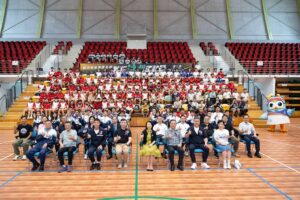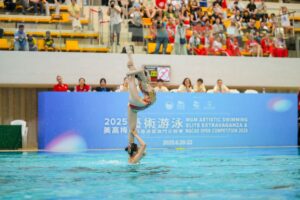- MGM leads 120 delegates to Foshan for lion dance exchange and cultural exploration.
- The tour helped participants gain a deep understanding of lion dance culture from its roots.
In late September, MGM organized the “Lingnan Lion Dance Exchange Tour,” taking 120 participants, including students and parents from the “MGM Lion Dance Training Program,” to Foshan, the birthplace of lion dance, for a cultural exploration.

Co-hosted by MGM and the Wushu General Association of Macau (WGAM), the delegation visited the Liantang Lion Dance Training Base for exchanges with the local lion dance team, where both sides shared insights on the heritage and future development of lion dance. The teams also performed captivating demonstrations, highlighting their unique styles.

The group visited Liangsheng Company, a factory specializing in lion dance props using intangible cultural heritage techniques. They observed the process of crafting lion heads and drums. Craftsmen from this company were invited to Macau last year to demonstrate their skills during the “MGM Lion Dance Festival”, and this visit strengthened the cultural ties between Macau and Foshan.
The delegation also toured Foshan’s historical sites, including Liang’s Garden and the Ancestral Temple, and enjoyed a local performance.

Catarina Lio, Chairman of “The 11th International Lion Dance Championship 2024 – MGM Cup” Organizing Committee and Senior Vice President of Brand Marketing of MGM, said, “As we believe that the inheritance of culture requires vitality, MGM brings our young lion dance masters to Foshan not only to help them understand the lion dance culture and the artistic spirit behind it from its origin, but also enabling the young generation’s innovation in cultural inheritance through the cultural differences between Macau and Foshan.
“This exchange tour also visited training bases as well as lion dance props factory, offering a different perspective for Macau youth to deepen their knowledge of lion dance and more importantly, to increase their sense of Chinese cultural identity.”

























